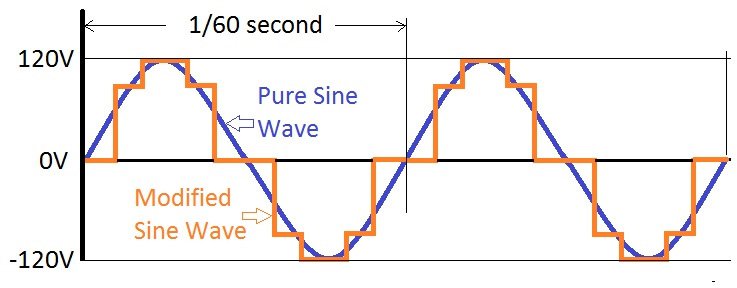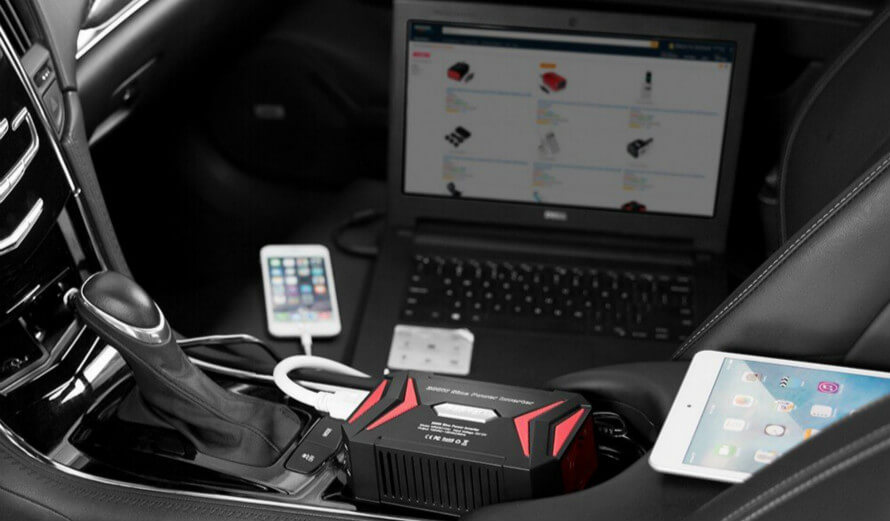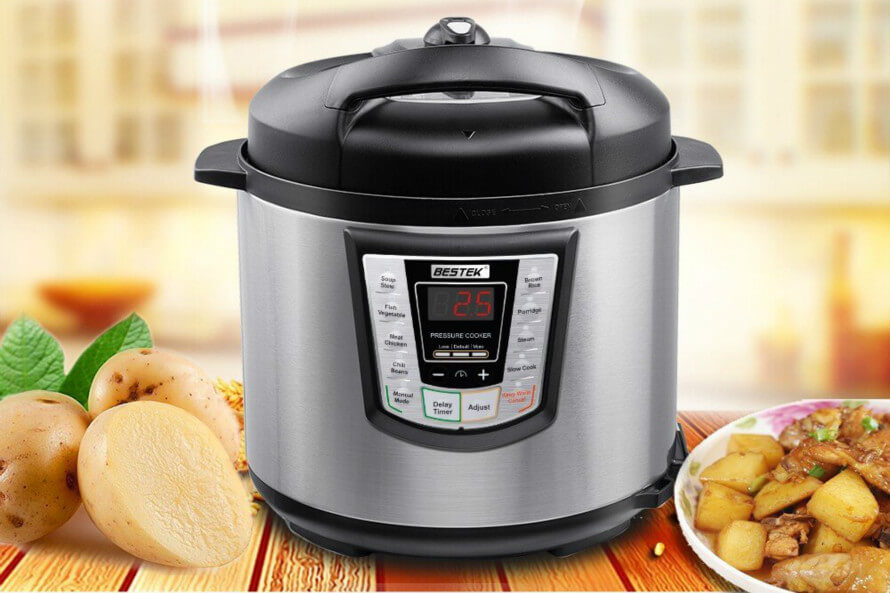Power inverters are mainly divided into two types – pure sine wave (or referred to as sine wave/true sine wave) and modified sine wave. Knowing about the difference between pure sine wave and modified sine wave can help you to choose a suitable power inverter.
What is power inverter?
Most people may have little knowledge of power inverter itself before shopping, only knowing that it is used in car for powering car appliances and electronics. To use power inverter correctly and safely, it is necessary to learn about some professional knowledge about power inverter.
The power inverter works for converting the DC (direct current) power form solar panels or batteries into AC (alternating current) power. To realize that power converting, power inverter has to take the constant DC voltage and change it on its own way like a sine wave curve that goes above and below 0 volts. Based on the types of current peak and zero volt times, there comes into being Pure Sine Wave and Modified Sine Wave.
What is Pure Sine Wave?
Pure sine wave or sine wave is named after the function sine and firstly a mathematical curve. In electronic area, pure sine wave inverter means that the output voltage is converted in a sine wave-form. In the sine wave form, the voltage alternates with a sinusoidal curve that has one rounded peak above or below zero voltage. It rises and falls smoothly with a stable and smooth turning phrase angle. When it arrives at zero volt, voltage can change its polarity instantly without a pause.
What is modified sine wave?
Different from pure sine wave, the modified wave convert voltage less smoothly. It doesn’t convert the voltage straightly up and down but there are 2 or more turning blocks above and below zero. Modified sine wave may have more than 2 peaks, so the peak voltage may stay instantaneous for a few milliseconds. As for the zero cross, MSW may also keep at zero for a few milliseconds.

Advantages of pure sine wave inverter
1.Output voltage in the form of pure sine wave inverter has low harmonic distortion and clean power like utility-supplied electricity.
2.Pure sine wave output voltage can make inductive loads like microwave ovens and motors run faster, quitter and cooler.
3.With pure sine wave, the output is more stable and effective, suitable for any loads.
4.It can help to reduce electrical and audible noise that modified sine wave can’t avoid in audio amps, TV, fans, fax and answering machines, etc.
5.It can effective prevent crashes in computers, glitches and weird print out.
Pros & Cons of modified sine wave inverters
1.The advantages of modified sine wave inverters lie in that it is more economical than pure sine wave inverters. When the load is simple induction or resistive load like motor and light bulbs, the modified sine wave can work better than sine waves.
2.The disadvantages is that the modified sine wave won’t work well with some modern appliances.
*Laser printers, photocopiers, and anything with an electrical component called a thyristor
*Anything with a silicon-controlled rectifier (SCR), like those used in some washing machine controls
*A few laptop computers
*Some fluorescent lights with electronic ballasts
*Some battery chargers for cordless tools
*Some new furnaces and pellet heaters with microprocessor controls
*Digital clocks with radios
*Appliances having speed/microprocessor controls (like some sewing machines)
*X-10 home automation systems
*Medical equipment such as oxygen concentrators
Which type is suitable for you?
Economical modified sine wave is more suitable for common users who just need to run TV, light bulbs, microwave oven, tools, etc. While pure sine wave inverters are suitable for you if you want to power up your sensitive electrical or electronics items like computers, laptops, stereos, laser printers, and other certain specialized applications like medical equipment.
All in all, to choose a power inverter that suits you well, you should first make it clear what appliances or electronics you have or how you want to use it according to your charging demands.











.jpg)





